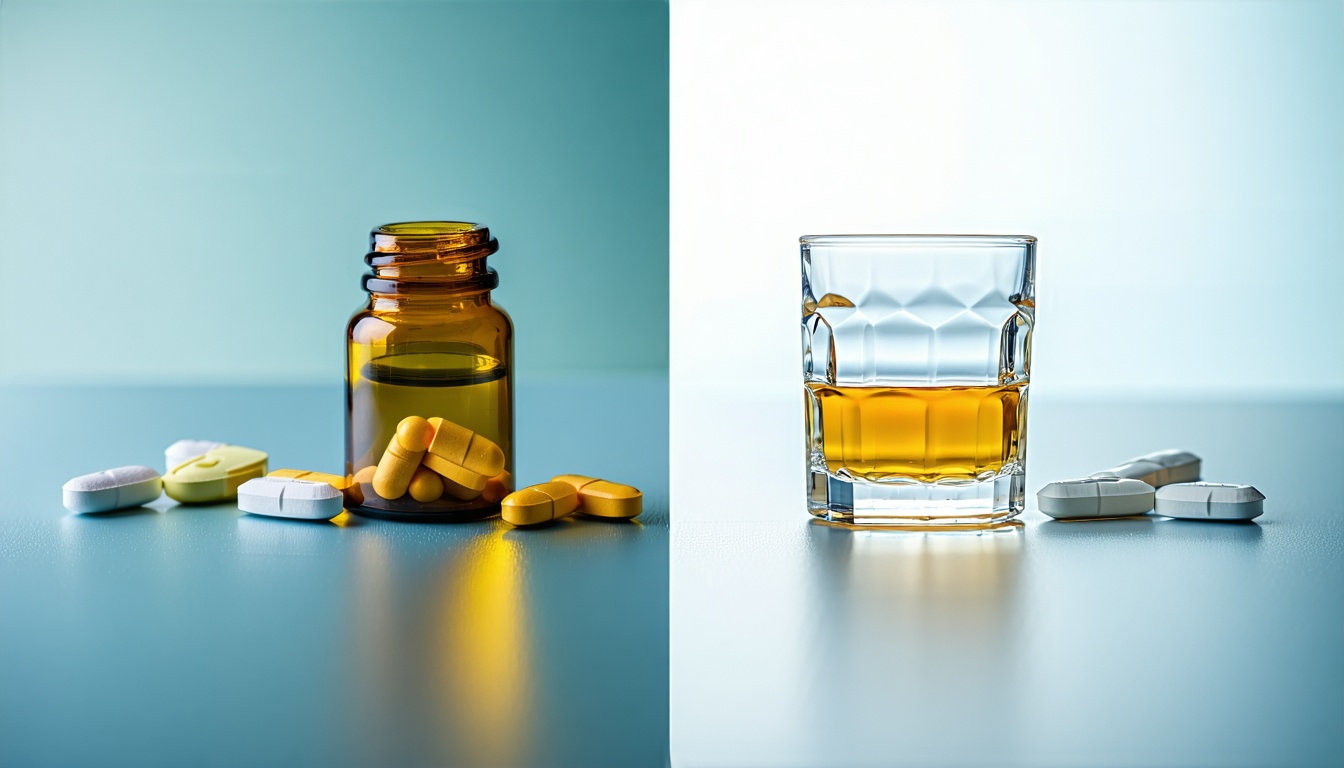The Importance of High-Quality Care
When considering detoxing from opioids vs. alcohol: differences in care and support, we emphasize the necessity of high-quality care to ensure effective recovery. Choosing the right facility can significantly impact the path taken towards sobriety. At Recovery Bay Center, we are committed to providing the highest standards of medical detox and substance abuse recovery care.
Embracing Recovery Bay Center
At Recovery Bay Center, we understand that the journey to recovery requires a compassionate approach tailored to individual needs. Substance abuse treatment can be offered in both inpatient and outpatient environments. According to NCBI, research has yet to find a definitive correlation between treatment setting and successful recovery outcomes. This means that our patients can find effective support in either format, depending on what works best for them.
| Treatment Setting | Description |
|---|---|
| Inpatient | 24/7 medical supervision, providing intensive support |
| Outpatient | Flexible care allowing patients to continue daily routines while receiving treatment |
We embrace a holistic approach to recovery, incorporating not just medical detox but also emotional and psychological support. This creates a well-rounded experience that promotes healing on multiple levels.
Path to Substance Abuse Recovery
Substance abuse recovery resembles the treatment of other chronic medical conditions. The success rates are comparable, which underscores the importance of proper care and ongoing support. As noted by NCBI, with the right treatment plan, individuals can significantly improve their chances of long-term recovery.
At Recovery Bay Center, we recognize that every person’s path to recovery is unique. This is why we offer a variety of programs designed to address the specific needs of our patients, ensuring that they receive personalized care. Medical detox is an essential step before starting rehabilitation, allowing individuals to safely withdraw from substances while being monitored around the clock. For more information on this crucial phase, read about why medical detox is essential before starting rehab.
We aim to combine detox with therapy for a seamless transition to rehab, facilitating a strong foundation for long-term sobriety. Understanding the complexities of detoxing from substances like opioids and alcohol is essential, and we are here to help navigate this challenging process. By choosing Recovery Bay Center, patients are taking a significant step towards healing and recovery. Our commitment to high-quality care sets the stage for successful rehabilitation and sustained wellness.
Understanding Medical Detox
Understanding the nuances of medical detox is essential for individuals seeking effective treatment for substance abuse. At Recovery Bay Center, we prioritize a comprehensive approach that encompasses various care methodologies to meet the unique needs of each individual.
Differentiating Care Approaches
Medical detox entails a difference in care approaches for detoxing from opioids vs. alcohol, tailored to the specific needs of the patient. The methods used during detoxification can vary significantly based on the substance, severity of dependence, and individual health factors.
Below is a comparison of the care approaches for both opioids and alcohol:
| Aspect | Opioid Detox | Alcohol Detox |
|---|---|---|
| Risk of Withdrawal Symptoms | Higher, including severe discomfort and complications | Varies, but can include seizures and delirium tremens (DTs) |
| Support Services | Interprofessional team including psychiatrists, nurses, and social workers | Similar multidisciplinary care with emphasis on managing withdrawal symptoms |
| Pharmacotherapy | Use of medications like clonidine and other symptom management options | Medications for DTs such as benzodiazepines |
Patients undergoing detoxification from opioids should be thoroughly educated about potential risks, advised against abrupt discontinuation, and strongly encouraged to participate in medically supervised detoxification. We believe in a collaborative interprofessional team approach to provide the most effective care tailored to the specific needs of our patients.
Supportive Services and Treatment
Supportive services during the detox process are critical to ensure the safety and comfort of individuals as they remove substances from their systems. These services include:
-
Around-the-Clock Care: Inpatient facilities, like those at Recovery Bay Center, provide 24/7 supervision and support. This is crucial for managing withdrawal symptoms safely and effectively. Inpatient care is particularly important for severe cases where individuals may face medical complications (NCBI).
-
Symptom Management: Pharmacological management is employed to alleviate specific symptoms experienced during withdrawal. For opioid withdrawal, medications may include loperamide for diarrhea and promethazine for nausea (NCBI). This targeted approach helps mitigate discomfort while ensuring the detox transitions as smoothly as possible.
-
Therapy Integration: Incorporating therapy with detoxification enhances recovery potential. It sets the foundation for long-term sobriety. We emphasize the importance of integrating detox with therapy to facilitate a seamless transition to rehabilitation (combining-detox-with-therapy-for-a-seamless-transition-to-rehab).
At Recovery Bay Center, we are committed to providing the highest quality medical detox and substance abuse recovery care, ensuring our patients feel supported and empowered throughout their healing journey. For more information on what to expect during this process, feel free to visit our resource on what to expect during medical detox at a professional facility.
Inpatient vs. Outpatient Treatment
Choosing the right treatment for substance abuse is critical for recovery. At Recovery Bay Center, we emphasize understanding the differences between inpatient and outpatient care. Each method has unique advantages, tailored to individual needs in drug and alcohol detox.
Around-the-Clock Care
Inpatient hospitalization for substance abuse treatment ensures comprehensive support, providing around-the-clock supervision by a multidisciplinary staff. This approach emphasizes the medical management of detoxification, addressing psychiatric crises, and overseeing general medical conditions that may complicate withdrawal. Inpatient care is especially essential in severe cases, including instances of overdose, severe withdrawal syndromes, significant psychiatric comorbidities, and acute dependencies that haven’t responded to other treatments.
| Feature | Inpatient Treatment | Outpatient Treatment |
|---|---|---|
| Supervision | 24/7 care | Limited hours |
| Setting | Hospital or treatment center | Home or community-based |
| Suitability | Severe cases | Mild to moderate cases |
| Daily Activities | Structured | Flexible |
Multidisciplinary Approach
The success of detoxification greatly relies on a collaborative interprofessional team approach. Patients detoxing from opioids benefit from education about the risks associated with opioid use and the importance of medically supervised detoxification. At Recovery Bay Center, our team includes psychiatrists, nurses, social workers, therapists, pharmacists, and other healthcare professionals who work together to provide comprehensive care and support to patients (NCBI). This holistic approach ensures that each individual’s physical, mental, and emotional needs are met during recovery.
Intensive Outpatient Programs
Intensive outpatient programs (IOPs) provide the flexibility to maintain daily responsibilities while still receiving substantial support. These programs require a minimum attendance of 9 hours per week, typically broken into increments of 3 to 8 hours a day, spread over 5 to 7 days a week. IOPs are ideal for patients who are in the early stages of recovery or those transitioning from residential or hospital settings (NCBI). This flexibility can ease the transition back into normal life while still ensuring sufficient accountability and support.
The choice between inpatient and outpatient care will depend on individual circumstances and needs. For a more detailed overview of what to expect during medical detox, please visit our page on what to expect during medical detox at a professional facility.
Pharmacotherapy for Opioid Withdrawal
Managing Withdrawal Symptoms
Managing the symptoms of opioid withdrawal can be challenging, but pharmacotherapy plays a crucial role in alleviating discomfort and ensuring safety during this process. Various medications can be prescribed to target specific withdrawal symptoms:
| Symptom | Medication | Purpose |
|---|---|---|
| Diarrhea | Loperamide | To slow bowel movements |
| Nausea/Vomiting | Promethazine | To reduce nausea and vomiting |
| Muscle Pain | Ibuprofen | To address muscle aches |
| High Blood Pressure | Clonidine | To lower blood pressure |
These medications are essential for people undergoing detox and enable a smoother transition through the withdrawal phase. For a deeper understanding of what to expect during this process, refer to our article on what to expect during medical detox at a professional facility and managing withdrawal safely with 24/7 medical supervision.
Medications for Opioid Dependence
In addition to managing withdrawal symptoms, several medications are widely used for maintaining long-term recovery from opioid dependence. The two most common medications are methadone and buprenorphine.
-
Methadone: Methadone is an oral mu-receptor agonist used in opioid replacement therapy. It offers several benefits, including decreased euphoric effects, reduced narcotic cravings, and lower risk of infectious disease transmission (NCBI Bookshelf). It can be administered in both inpatient and outpatient settings, with a typical starting dose of 10 mg every 4 to 6 hours to manage withdrawal symptoms effectively.
-
Buprenorphine: Buprenorphine is another option for long-term opioid replacement therapy. It is typically started at a dose of 4 to 12 mg sublingually and must be given 12 to 18 hours after the last use of short-acting agonists or 24 to 48 hours after the last use of long-acting agonists (NCBI Bookshelf). This medication is effective in managing cravings while minimizing withdrawal symptoms.
Understanding the pharmacotherapy options available for opioid withdrawal and dependence can provide a solid foundation for recovery. These treatments, combined with additional support and therapy, can significantly improve the chances of successful long-term sobriety. For more detailed insights into detox and recovery processes, consider reading about why medical detox is essential before starting rehab and combining detox with therapy for a seamless transition to rehab.
Opioid Agonist Pharmacotherapy
In our commitment to providing the highest quality care at Recovery Bay Center, we emphasize the importance of opioid agonist pharmacotherapy for individuals grappling with opioid use disorder (OUD). This treatment involves the use of medications such as methadone and buprenorphine to alleviate withdrawal symptoms and cravings, ultimately supporting the recovery journey.
Methadone Treatment
Methadone, an oral mu-receptor agonist, is widely used in opioid replacement therapy. It offers numerous advantages, including the reduction of euphoric effects, diminished narcotic cravings, and lowered risk of infectious disease transmission. Methadone maintenance is non-sedating and medically safe, making it a viable long-term solution for pain management in patients with OUD (NCBI Bookshelf).
| Key Features of Methadone Treatment | Details |
|---|---|
| Administration | Given in both inpatient and outpatient settings |
| Starting Dose | 10 mg every 4 to 6 hours if withdrawal persists |
| Benefits | Reduces cravings, enhances stability in recovery |
Role of Buprenorphine
Buprenorphine serves as another effective option for maintenance therapy for OUD. As a partial mu-receptor agonist, it is available in various formulations, including sublingual tablets, films, solutions, patches, and implants. The therapy typically aims to achieve an effective dose gradually, aiding in the reduction of withdrawal symptoms and cravings.
| Key Features of Buprenorphine Treatment | Details |
|---|---|
| Dosage Strategy | Initial dosing of 4 to 12 mg sublingually |
| Timing | Administered 12-18 hours after last use of short-acting agonists (e.g., heroin) or 24-48 hours after long-acting agonists (e.g., methadone) |
| Benefits | Reduces withdrawal symptoms, promotes abstinence |
The Mainstreaming Addiction Treatment (MAT) Act has expanded the accessibility of treatments for addressing the opioid epidemic. Now, all healthcare providers holding a controlled substance certificate can prescribe buprenorphine for patients with OUD, streamlining the process and ensuring more individuals can receive the necessary support.
Naltrexone for Opioid Use Disorder
Naltrexone is another medication used in the treatment of opioid use disorder. Unlike methadone and buprenorphine, which are agonists, naltrexone acts as an opioid antagonist. This means it blocks the effects of opioids, preventing their euphoric effects. Such action is particularly beneficial for individuals who have completed detoxification and are ready to maintain their sobriety without the risk of relapse.
| Key Features of Naltrexone Treatment | Details |
|---|---|
| Mechanism | Opioid antagonist that blocks opioid effects |
| Administration Routes | Available as a monthly injection or daily oral formulation |
| Benefits | Helps prevent relapse by eliminating the euphoric effects of opioids |
We encourage anyone considering treatment options for opioid use disorder to explore the benefits of medication-assisted treatments. By incorporating pharmacotherapy alongside our comprehensive recovery programs, we provide a solid foundation for long-term sobriety. For more information on the detox process, including what to expect during medical detox at a professional facility and the importance of medical detox before rehab, please visit our resources.
Opioid Use in Pregnancy
Treatment Considerations
For pregnant women experiencing opioid use disorder (OUD), careful treatment planning is critical. It is recommended that they receive opioid agonist pharmacotherapy, such as methadone or buprenorphine. This approach is preferred due to its effectiveness compared to medically supervised withdrawal, which often leads to high relapse rates and poorer outcomes (ACOG). Both medications help prevent withdrawal symptoms and improve adherence to prenatal care—essential factors for the health of both the mother and the unborn child.
| Treatment Option | Administration | Frequency |
|---|---|---|
| Methadone | Daily at a registered opioid treatment program | Daily |
| Buprenorphine | Prescribed in an office-based setting | As needed (initial dose usually 4-12 mg) |
Medication Options
Both methadone and buprenorphine are commonly used for long-term treatment of opioid dependence in pregnant women. Methadone requires daily visits to an opioid treatment program, while buprenorphine’s partial agonist properties allow for less frequent administration.
- Methadone: Doses typically start at 10 mg and may be given every 4 to 6 hours if withdrawal symptoms persist.
- Buprenorphine: To initiate treatment, it must be given 12 to 18 hours after the last use of short-acting opioids or 24 to 48 hours after long-acting opioids. This flexibility is beneficial for mothers managing their addiction within outpatient settings.
While buprenorphine’s use has advantages, it is essential to note potential risks, such as hepatic dysfunction, and ongoing research into neonatal outcomes for infants exposed to buprenorphine ACOG.
Ensuring Maternal and Fetal Health
To ensure the best outcomes, collaboration with pediatric care teams is vital for monitoring and managing neonatal abstinence syndrome (NAS) in infants whose mothers utilized opioid agonists during pregnancy. The use of these medications has not only shown a reduction in withdrawal symptoms but also a decrease in the incidence of obstetric complications, which is fundamental for maternal and fetal health during this critical period (ACOG).
By integrating comprehensive care that includes medication, prenatal support, and monitoring, Recovery Bay Center aims to ensure both mother and baby have the healthiest possible outcomes during pregnancy. For more information on what to expect during medical detox at a professional facility, please visit our page on what to expect during medical detox at a professional facility.





